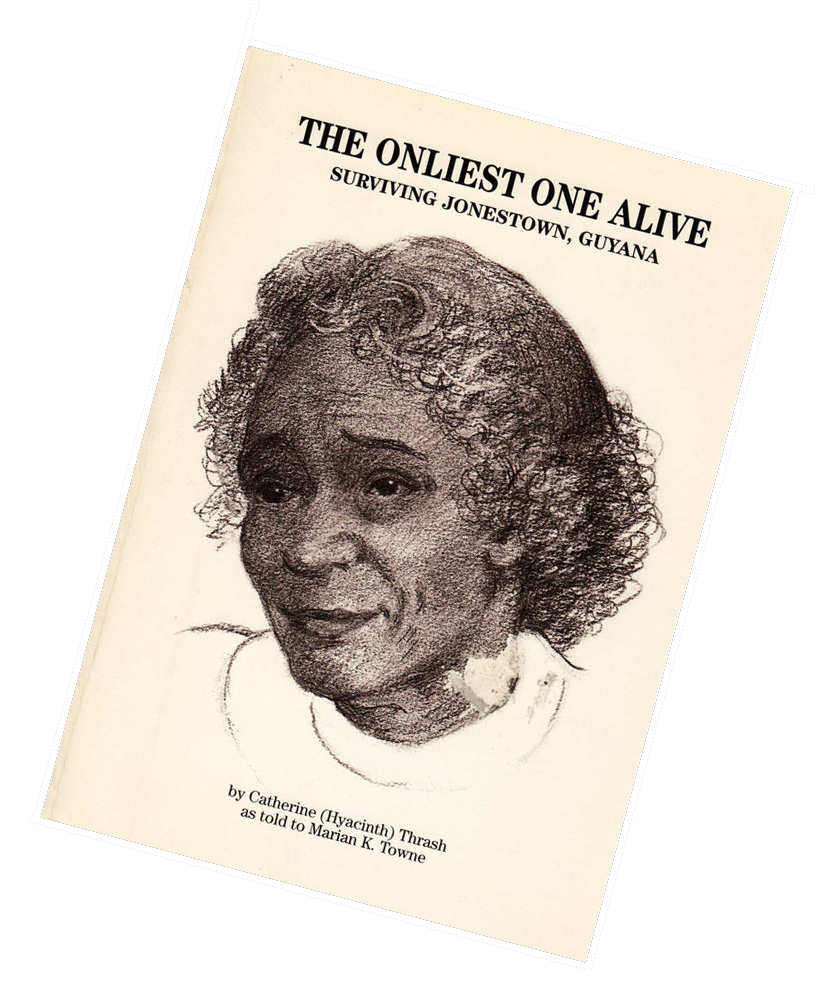 Catherine Hyacinth Edwards Thrash was an incredible witness to one of history’s most tragic and catastrophic events in Jonestown, Guyana on November 18, 1978.
Catherine Hyacinth Edwards Thrash was an incredible witness to one of history’s most tragic and catastrophic events in Jonestown, Guyana on November 18, 1978.
By her sheer will, she chose not to attend the final White Night when Jim Jones called the community of Jonestown down to the pavilion after Congressman Leo Ryan left with his party and fifteen Temple defectors. Initially fightened by the sound of gunfire – were they trying to scare people to go the the pavilion, or was it mercenaries after all – Hyacinth hid under her bed to wait for her sister, Zipporah Edwards, and her housemates to return from the meeting. When nobody did, she fell asleep, and stayed asleep until the next morning, November 19.
When she woke up, it was to a scene of horror that we cannot even begin to imagine. Despite everything that might have been wrong about Jonestown, its self-destruction at their own hands was unthinkable and unimaginable. The people in Jonestown were not only her family members like her sister, but they were friends and a community. I cannot imagine her shock, disbelief, and the overcoming realization that she was left alone.
The Onliest One Alive: Surviving Jonestown, Guyana is different from other books about Jonestown because it is told from an African American woman’s experience, following her history with Jones from Indianapolis to Northern California to Guyana. It was also the first account told in the first person by a member of the Jonestown community.
Also, unlike other followers who have written books, Hyacinth was not one of the privileged in the planning commission. She led a very quiet and dignified life with her sister, who died in Jonestown.
Hyacinth writes about her family history as being descendants of slaves and the move to Indianapolis. Crippled and needed assistance in walking, she truly believed that Jim Jones did cure her of an illness. She and her sister didn’t have husbands or children of their own. They cared for mentally ill patients in their home thanks to Jones.
Hyacinth regrets not leaving Jones sooner than when it was too late. Like so many other followers, shewas becoming disillusioned with Jones who was becoming mad, paranoid, and drug-addicted. Unlike the others, she didn’t see or meet with Ryan or any of the press during their visit.
Hyacinth writes lovingly about the innocent victims of Jones’ madness. Of course, she wanted to escape and made plans to go to Georgetown when possible. But she couldn’t leave her sister or her community behind.
Hyacinth had a softness for Marceline Jones who was obviously victimized by her husband. The book recounts an incident where Marceline tried to kill him. Oh, if only she had succeeded. There wouldn’t any books, memorials, or movies, cause hundreds of innocent victims would atill have their lives.
Despite her survival, Hyacinth was not greeted with a hero’s welcome for being a handful of survivors. She returned to Indianapolis, and her sister was buried in Southern California.
Hyacinth would live for many years in a nursing home in Indianapolis, and I am grateful that she lived long enough to tell her story. It is an amazing story of hope, determination, and faith in the end.
(Sylvia Marciniak is a regular contributor to the jonestown report. Her complete collection of writings for the site may be found here. She can be reached at Sylviastel@aol.com.)